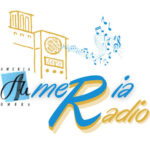Con Pier Giuseppe Arcangeli etnomusicologo
In studio Maria Teresa Ferrante e Massimiliano Samsa
PASSIONE DELLE VOCI
Un viaggio in compagnia del musicologo Piero Arcangeli lungo le vie della tradizione orale,
dal Nord-Est alle Isole, alla scoperta dei canti paraliturgici della Settimana di Passione, ancora
oggi ‘in funzione’ grazie alla memoria e alla persistenza delle Confraternite laiche e della loro
vocalità straordinaria: un patrimonio ‘unico’ e tuttavia sempre diverso per le molteplici
ibridazioni regionali.
Le ricerche, le raccolte, gli studi condotti dall’etnomusicologia italiana fra gli anni ‘60 e i ‘90
del secolo scorso ci hanno rivelato un filone culturale e musicale per tanto tempo rimasto
‘ai margini’ della conoscenza e del senso comune: un mondo ‘inaudito’ di suoni, che ha come
fonti ‘latenti’ e perlopiù misteriose le composizioni e le pratiche polifoniche d’arte del grande
repertorio sacro (dal tardo Rinascimento al “Barocco”, fin dentro il Settecento), e che –
trasformandosi – si è conservato fino a noi, in grazia delle sorprendenti risorse e
della ‘spontanea’ e pur raffinata espressività di voci ‘sapientemente incolte’.
Un vivo corpus popolare, cui va riconosciuto, fra l’altro, il merito di gettare una luce
retrospettica nuova sulle ‘prassi esecutive’ della polifonia storica.
A tour with the musicologist Piero Arcangeli across the way of the oral tradition, from the North-West to the islands, in order to discover some paraliturgical hymns about the Passion Week. They are still “running” thanks not only to the non-religious confraternities’ memory and persistence, but also for their extraordinary vocality: a “unique” heritage but, however, constantly different because of the multiple regional interbreeding.
The carried out researches, collections and studies of italian ethnomusicology between the last century’s 60s and 90s, revealed a cultural and musical trend that was “marginalized” from the common sense and the knowledge for many years.
An “unheard” world of sounds that has the compositions and the art polyphonic practices of the huge sacred repertoire as “latent” and mysterious sources (from the late Renaissance to the “Baroque”, until the core of XVIII century).
They transformed and came to our days, in the grace of the surprising resources and the “spontaneus”, refined expressivity of expertly uncultivated voices.
A lively popular corpus, that must be recognized the worthiness of giving a retrospective light to the esecutive praxis of historic poliphony.
Traduzione Dott.ssa Chiara Pellegrini

